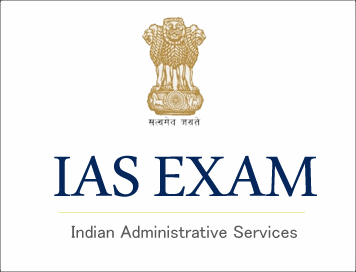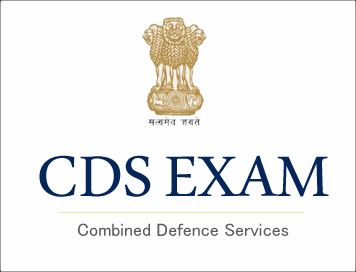The broken promise of decent and fair wages (Mint)
- Mains Paper 2 : Polity
- Prelims level : Draft wages code
- Mains level : Significance of the draft wages code
Context
- The Ministry of Labour and Employment recently published the draft rules for implementing the provisions of Code on Wages, 2019 earlier given assent by the President.
What are the draft rules for?
- The Code on Wages replaces four laws:
1. the Payment of Wages Act, 1936
2. the Minimum Wages Act, 1948
3. the Payment of Bonus Act, 1965
4. the Equal Remuneration Act, 1976
- It seeks to regulate wages and bonuses for all workers employed by any industry, trade, business or manufacturer.
- While the Code is now law, the Ministry has published the draft rules for implementing the provisions, seeking comments.
- Following the consultation, the Centre will notify the rules that will create the mechanisms to fix a floor wage.
- This would then materialise the minimum wages for different categories of workers - unskilled, semi-skilled, skilled and highly skilled.
- The States and Central government would then have to set and enforce them.
Why is the Code significant?
- Minimum wages are accepted globally to be a vital means to combat poverty.
- It equally crucially, ensures the vibrancy of any economy.
- The International Labour Conference’s Global Jobs Pact of 2009 identified the importance of wage regulation.
- It saw the regular adjustment of wages, in consultation with the social partners as a means of
- reducing inequality
- increasing demand
- contributing to economic stability
- The Pact came in the aftermath of the 2008 global financial crisis and the erosion of purchasing power worldwide.
What are the key provisions of the code?
- The Code acknowledges that the aim in setting the floor wage is to ensure “minimum living standards” for workers.
- The draft rules incorporate criteria declared in a landmark judgment of the Supreme Court in 1992 as well as recommendations of the 15th Indian Labour Conference.
- These include the -
- net calorific needs for a working class family set at 2,700 calories per day per consumption unit
- annual clothing requirements at 66 metres per family
- house rent expenses assumed at 10% of food and clothing expenditure
- expenses on children’s education, medical needs, recreation and contingencies
- A working class family is defined as the earning worker, spouse and two children or the equivalent of three adult consumption units.
- The rules, similarly, cover almost the entire gamut of wage-related norms.
- These include -
- the number of hours of work that would constitute a normal working day (set at 9 hours)
- time interval for revision of dearness allowance
- night shifts and overtime
- criteria for making deductions
- A separate chapter of the draft rules deals with the payment of bonus.
- Also dealt in detail are the guidelines for the formation of the Central Advisory Board as well as its functioning.
What were the earlier recommendations in this regard?
- A national minimum wage of Rs. 176 per day had been recommended in 2017.
- An expert committee had in 2019 recommended that a ‘need based national minimum wage for India’ ought to be fixed at Rs. 375 per day (Rs. 9,750 per month).
- Additionally, the committee had suggested payment of a city compensatory allowance averaging up to Rs. 55 per day for urban workers.
- Earlier, in 2015, the 7th Central Pay Commission had recommended setting the minimum pay for government employees at Rs. 18,000 per month.
- Recently, the Delhi government set a minimum wage of Rs. 14,842 per month for unskilled workers.
- This came after the Supreme Court ruled in favour of the local government, leaving aside the objections raised by many employers’ associations.
- The Economic Survey too emphasized on the importance of establishing an effective minimum wage system.
How will the code impact the economy?
- A lot will depend on the final floor wage or wages that the Centre will choose to set.
- A statutory national minimum wage would have multiple impacts including helping lift wage levels and reducing wage inequality.
- It would thus go a long way in ensuring inclusive growth.
- For India to reap the ‘demographic dividend’, robust wage expansion would be essential to help sustain consumption-led economic growth.
Way ahead
- Trade unions have voiced their reservations with multiple aspects of the Code and plan to submit detailed feedback.
- The points of contention include - the 9-hour working day definition, a lack of clarity in the rules on scope for upgradation of workers’ skill category, the lack of representation for trade unions in the wage fixation committee
- The ultimate success of the Code will be determined by the extent to which the minimum wage set is both fair and actually implemented.
- It would, ultimately, have to benefit the millions of workers in the unorganised sectors of the economy.
Prelims Questions:
Q.1) With reference to the “Swachh – Nirmal Tat Abhiyaan”, consider the following statements:
1. It is undertaken by Department of Drinking Water and Sanitation.
2. Its objective is to make beaches clean and create awareness amongst about the importance of coastal ecosystems.
Which of the statements given above are correct?
(a) 1 only
(b) 2 only
(c) Both 1 and 2
(d) None of the above
Ans: B
Mains Questions:
Q.1) What is the Code on Wages draft rules for? Why is the Code significant? What are the key provisions of the code?



